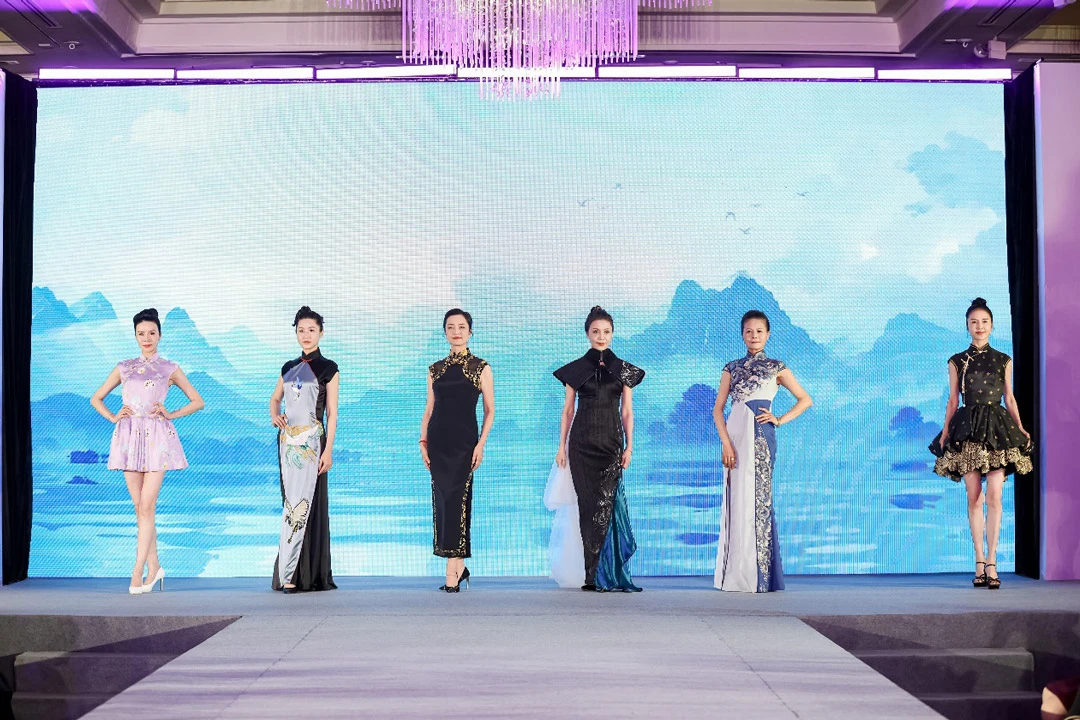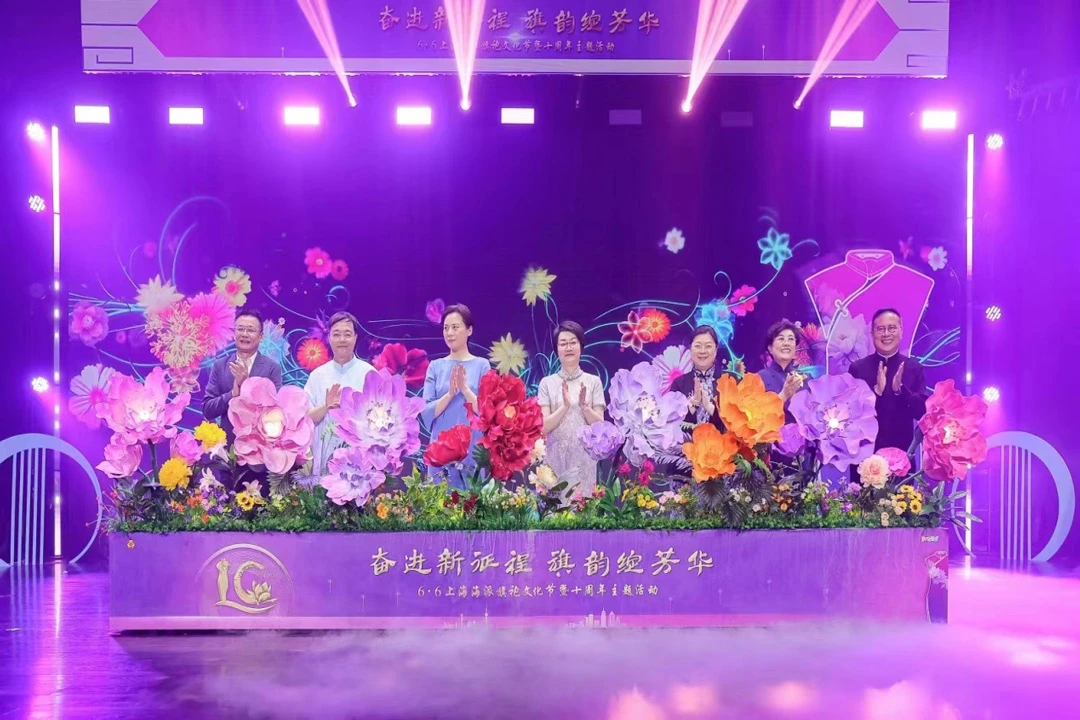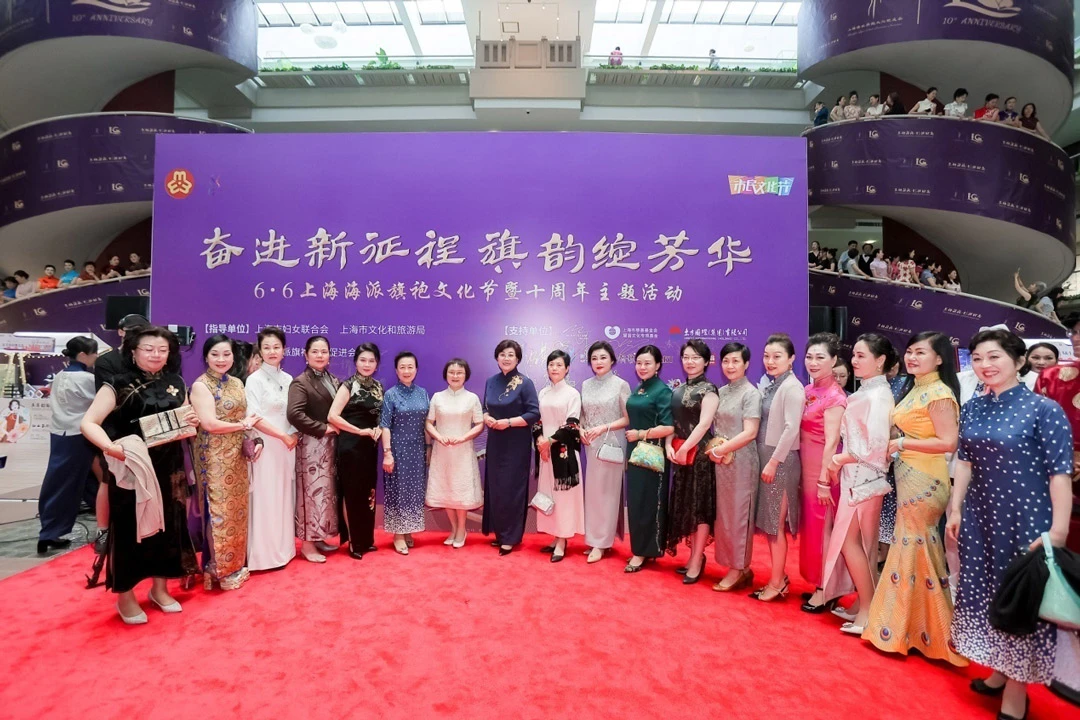The Shanghai Haipai Cheongsam Cultural Festival, now in its tenth year, has become a platform for promoting the “elegant, healthy, confident, and tasteful” lifestyle embodied by the Haipai cheongsam. The cheongsam, a traditional Chinese dress, is not merely a garment but a crystallization of art and culture. On June 6th, the festival, themed “Forging Ahead on a New Journey, Cheongsam Charm in Full Bloom,” commenced at the Shanghai Mall Theater.
The event featured a wide array of activities, including the Second Yangtze River Delta Cheongsam Innovative Design Competition, an exhibition of award-winning works, sharing of cultural and creative products, cheongsam fashion shows, an award ceremony, Shanghainese language lessons, and cultural performances. This diverse range of activities provided a platform for the exchange and showcase of the Haipai cheongsam culture, promoting its inheritance, innovation, and development.
The event, guided by the Shanghai Women’s Federation and the Shanghai Municipal Administration of Culture and Tourism, and hosted by the Shanghai Haipai Cheongsam Culture Promotion Association, attracted cheongsam enthusiasts from both China and abroad. Many renowned figures from the cultural, fashion, and various social circles actively participated in the festival.
During the festival, a series of activities were launched across four districts: schools, parks, urban areas, and communities. These activities included parent-child carnivals, cheongsam culture exchange and sharing sessions, tea art, calligraphy, and photography exhibitions, as well as poetry recitations.
The series of events revolved around the concept of “three cheongsams,” showcasing women’s multifaceted roles in different life scenarios, including their domestic roles, career pursuits, and social etiquette. The accessible nature of these activities allowed more people to personally experience the charm of the Haipai cheongsam and the fusion of red culture, Haipai culture, and Jiangnan culture, while also igniting the public’s enthusiasm and recognition of traditional culture.
The themed event also featured a fashion show displaying the award-winning works from the Second Yangtze River Delta Cheongsam Innovative Design Competition. As a prelude to the cultural festival, the competition’s final was recently held at the Shanghai International Fashion Center. The competition, centered around the concept of “a woman’s three cheongsams,” solicited entries from school faculty and students, enterprises, and independent designers worldwide, focusing on three main application scenarios: “casual cheongsams,” “workplace cheongsams,” and “formal cheongsams.”
A total of 1,825 design sketches were received from 530 participants, including college student designers, enterprises, and independent designers. After evaluation, Wang Maomao from Shanghai Chengchi Garment Co., Ltd. won the gold award for her work “Dragon Dance Cloudy Dress,” while three participants, including Jiang Aiqi from the Lu Xun Academy of Fine Arts, won silver awards. Six participants, including Li Duoduo from Henan University of Engineering, won bronze awards, with five others receiving individual awards and five receiving excellence awards.
Several garment companies signed contracts with the award-winning designers on-site, aiming to further explore and realize the commercial value of the works and designers, and to promote future collaborations.
The Haipai cheongsam, with its unique charm, has become a symbol of Shanghai’s culture and the embodiment of Chinese women’s elegance and grace. The Shanghai Haipai Cheongsam Cultural Festival not only showcases the beauty of this traditional garment but also serves as a platform for cultural exchange, innovation, and inheritance. By bringing together cheongsam enthusiasts, designers, and cultural figures, the festival aims to promote the development of the Haipai cheongsam culture and to foster a appreciation for traditional Chinese culture among the public.
The festival’s emphasis on the “three cheongsams” concept highlights the versatility and adaptability of this traditional garment in modern times. By showcasing cheongsams designed for casual wear, the workplace, and formal occasions, the event demonstrates how this classic dress can be integrated into various aspects of contemporary life. This approach not only preserves the essence of the cheongsam but also encourages innovation and creativity in its design and application.
The Yangtze River Delta Cheongsam Innovative Design Competition, a key component of the festival, serves as a platform for emerging designers to showcase their talent and creativity. By attracting participants from diverse backgrounds, including students, professionals, and independent designers, the competition fosters a vibrant and dynamic design community. The award-winning works not only showcase the designers’ skills but also provide a glimpse into the future of cheongsam design, as these innovative creations blend traditional elements with modern aesthetics and techniques.
The on-site signing of contracts between garment companies and award-winning designers highlights the festival’s commitment to promoting the commercialization and industrialization of cheongsam design. By facilitating collaborations between designers and manufacturers, the event helps to bridge the gap between creativity and production, ensuring that innovative designs can be translated into wearable garments that are accessible to a wider audience.
Beyond the design competition, the festival’s various activities, such as parent-child carnivals, cultural exchanges, and exhibitions, provide opportunities for the public to engage with the Haipai cheongsam culture in a more intimate and interactive manner. These activities not only showcase the beauty and elegance of the cheongsam but also educate participants about the rich history and cultural significance behind this iconic garment.
By involving the community in these events, the festival helps to foster a sense of pride and appreciation for traditional Chinese culture, ensuring that the legacy of the Haipai cheongsam is passed down to future generations.
Moreover, the festival’s emphasis on the fusion of red culture, Haipai culture, and Jiangnan culture highlights the cheongsam’s role as a cultural bridge, connecting different regional traditions and styles. By celebrating the diversity and richness of Chinese culture, the event promotes cultural exchange and understanding, fostering a sense of unity and shared heritage among participants.
As the Shanghai Haipai Cheongsam Cultural Festival continues to grow and evolve, it serves as a testament to the enduring appeal and relevance of this traditional garment in contemporary society. By embracing innovation, creativity, and cultural exchange, the festival ensures that the Haipai cheongsam remains a vital and dynamic part of Chinese fashion and culture.
In conclusion, the Shanghai Haipai Cheongsam Cultural Festival is more than just a celebration of a traditional garment; it is a platform for cultural exchange, innovation, and inheritance. Through its diverse range of activities, competitions, and collaborations, the festival promotes the development of the Haipai cheongsam culture, fosters creativity and entrepreneurship in the fashion industry, and encourages a deeper appreciation for traditional Chinese culture among the public.
As the festival continues to thrive, it serves as a shining example of how traditional heritage can be preserved, innovated, and celebrated in the modern era.



